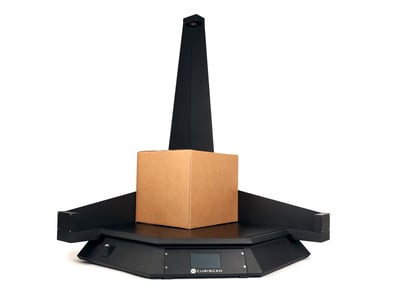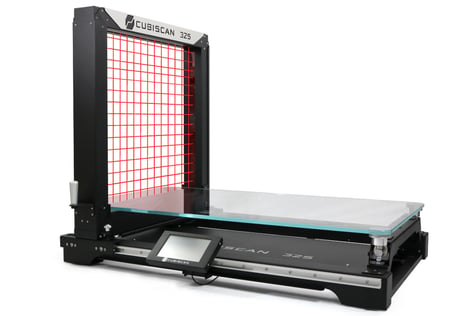Dimensioning systems utilize a variety of modern technology to help professionals in nearly every industry be more efficient, cut down on costs, and achieve better overall results. Modern dimensioners leverage several types of technology for collecting dimensional data of pallets, parcels, and irregular items of every size to make several types of operations be more efficient. All these technologies have advantages, disadvantages, and best use cases. In this article, we’ll discuss how these technologies work and how to get the most out of their dimensioning abilities.
 Ultrasound
Ultrasound
Ultrasound technology has been around for many years and is used in several industries including dimensioning. However, innovations by companies such as Cubiscan have made it far more effective today. Ultrasound technology uses sound waves to gather dimensional data. Ultrasound is best used for measuring cube-shaped parcels because the technology requires flat surfaces for the echo to bounce from. Another thing to consider with ultrasound is what material makes up the parcel. For example, foam material absorbs ultrasound and prevents it from bouncing back and providing the measurements. Ultrasound isn’t ideal for operations that need dimensional data for items that aren’t cube-shaped or made from material that will absorb the sound waves.
Camera Technology
There’s a lot of buzz surrounding cameras and their dimensioning capabilities. They’re viewed as new-wave technology and even the future gold standard by some dimensioning providers. However, there are still some challenges the technology needs to overcome to become the premier dimensioning technology. Cameras struggle with items that have black plastic, shiny surfaces, protrusions, shadowing, and dock sweat. Additionally, cameras have a hard time providing the most accurate data when an item has any of those attributes. Overall, cameras are a great solution for some items, but not the one-size-fits-all solution as they are sometimes presented as.
Laser Technology
Laser technology delivers the most accurate measurements and doesn’t struggle with the things that its ultrasound and camera counterparts do. There are two types of laser technologies used in dimensioning systems. Infrared laser gate technology and time of flight lasers. If you're looking into laser technology, here are differences between the two that you should be aware of.
 Infrared Laser Gate Technology
Infrared Laser Gate Technology
This laser technology is comprised of rows of transmitters and receivers that are spaced at the desired resolution. This is also referred to as a light curtain. Objects block out light as the gate passes over them. This technology can deliver accuracy to the millimeter and works well with items that aren't traditional cube shapes. An example of this technology is the Cubiscan 325. Here's a video where you can see it in action.
Time of Flight Laser
With time-of-flight lasers, the lasers are absorbed by color. Unlike cameras, this technology doesn’t struggle with black plastic because it uses all sources of available light. The dimensions appear as a point cloud as the lasers pass over the object. This technology was being used before cameras, but to this day lasers collect data that is more accurate than cameras. This technology is often used for pallet dimensioning in warehouse operations and distribution centers. These systems can be large and are mounted to the ceiling. A great example of this technology currently in use is the Cubiscan 1200-AKL.
Conclusion
The future of dimensioning technology is bright. The technologies we discussed in this piece will continue to improve and evolve. Look for new technology to emerge as well as it becomes available and ideas become reality. Here at Cubiscan, we’ve been leading the dimensioning industry for over three decades. We’re constantly looking to innovate and add to our product line.
To learn which dimensioning system would help your operation the best, click the button below, send an email to info@cubiscan.com, or give us a call at 801-451-7000.

